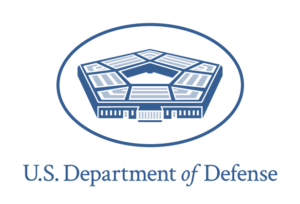Webinar Resources | How a Neurodiversity Mindset Helps Children Thrive
OneOp Resources
Sunrise to Sunset: Supporting Children with Autism Through Their Day – A four-part webinar series focused on supporting young children (ages birth to five years) with autism and their families.
Before, During, After: Supporting Children and Families During Transitions
Brains Differ, Strengths Shine: Navigating Neurodiverse Potential
Diverse Minds, One World: An Intro to Neurodiversity
Navigating TRICARE’s Autism Care Demonstration: A Guide for Providers and Military Families (webinar)
Supporting Military Families: An In-Depth Look at the TRICARE Autism Care Demonstration (webinar)
External Resources
A Strength Focused Approach to Autism
Learn Play Thrive (Facebook Group)
Life Journey Through Autism: A Guide for Military Families from Organization for Autism Research (available as a free download)
Military OneSource: Special Needs (information for military families of a child with a disability)
Operation Autism: A Resource Guide for Military Families
TRICARE Autism Care Demonstration
TRICARE East Region (Humana Military) Autism Center of Excellence
Citations
Botha, M., Hanlon, J., & Williams, G. L. (2023). Does language matter? Identity-first versus person-first language use in autism research: A response to Vivanti. Journal of autism and developmental disorders, 53(2), 870-878.
Bottema-Beutel, K., Kapp, S. K., Sasson, N., Gernsbacher, M. A., Natri, H., & Botha, M. (2023). Anti-ableism and scientific accuracy in autism research: a false dichotomy. Frontiers in Psychiatry, 14, 1244451.
Crompton, C. J., Ropar, D., Evans-Williams, C. V., Flynn, E. G., & Fletcher-Watson, S. (2020). Autistic peer-to-peer information transfer is highly effective. Autism, 24(7), 1704-1712.
Disability Rights Texas. Identity-First Language vs. People-First Language. Retrieve from https://disabilityrightstx.org/en/2023/04/13/identity-first-language-vs-people-first-language/
Doyle, N. (2020). Neurodiversity at work: a biopsychosocial model and the impact on working adults. British medical bulletin, 135(1), 108-125.
Centers for Disease Control (n.d.). Clinical Testing and Diagnosis for Autism Spectrum Disorder. Retrieved from https://www.cdc.gov/autism/hcp/diagnosis/index.html
Falk, D. (2009). New information about Albert Einstein’s brain. Frontiers in Evolutionary Neuroscience, 1, 536.
Faraji, R., Ganji, Z., Zamanpour, S. A., Nikparast, F., Akbari-Lalimi, H., & Zare, H. (2023). Impaired white matter integrity in infants and young children with autism spectrum disorder: What evidence does diffusion tensor imaging provide?. Psychiatry Research: Neuroimaging, 111711.
Godlee, F., Smith, J., & Marcovitch, H. (2011). Wakefield’s article linking MMR vaccine and autism was fraudulent. Bmj, 342:c7452
Henrich, J., Heine, S. J., & Norenzayan, A. (2010). Beyond WEIRD: Towards a broad-based behavioral science. Behavioral and brain sciences, 33(2-3), 111.
Hudson, C. C., Hall, L., & Harkness, K. L. (2019). Prevalence of depressive disorders in individuals with autism spectrum disorder: A meta-analysis. Journal of abnormal child psychology, 47, 165-175.
Libero, L. E., Schaer, M., Li, D. D., Amaral, D. G., & Nordahl, C. W. (2019). A longitudinal study of local gyrification index in young boys with autism spectrum disorder. Cerebral Cortex, 29(6), 2575-2587.
Markram, K., & Markram, H. (2010). The intense world theory–a unifying theory of the neurobiology of autism. Frontiers in human neuroscience, 4, 224.
McGuire, A. (2016). War on autism: On the cultural logic of normative violence. University of Michigan Press.
Mitchell, P., Sheppard, E., & Cassidy, S. (2021). Autism and the double empathy problem: Implications for development and mental health. British Journal of Developmental Psychology, 39(1), 1-18.
Rao, T. S., & Andrade, C. (2011). The MMR vaccine and autism: Sensation, refutation, retraction, and fraud. Indian journal of psychiatry, 53(2), 95-96.
Rentenbach, B., Prislovsky, L., & Gabriel, R. (2017). Valuing differences: Neurodiversity in the classroom. Phi Delta Kappan, 98(8), 59-63.
Traut, N., Beggiato, A., Bourgeron, T., Delorme, R., Rondi-Reig, L., Paradis, A. L., & Toro, R. (2018). Cerebellar volume in autism: literature meta-analysis and analysis of the autism brain imaging data exchange cohort. Biological Psychiatry, 83(7), 579-588.
Wehmeyer, M., Bersani, H., & Gagne, R. (2000). Riding the third wave: Self-determination and self-advocacy in the 21st century. Focus on autism and other developmental disabilities, 15(2), 106-115.
Weinberg, A., & Doyle, N. (2017, November). Psychology at work: Improving wellbeing and productivity in the workplace. The British Psychological Society.
The above resources, links, and references may include both no cost and cost-based resources and inclusion in this list does not constitute endorsement by DOD or USDA.









